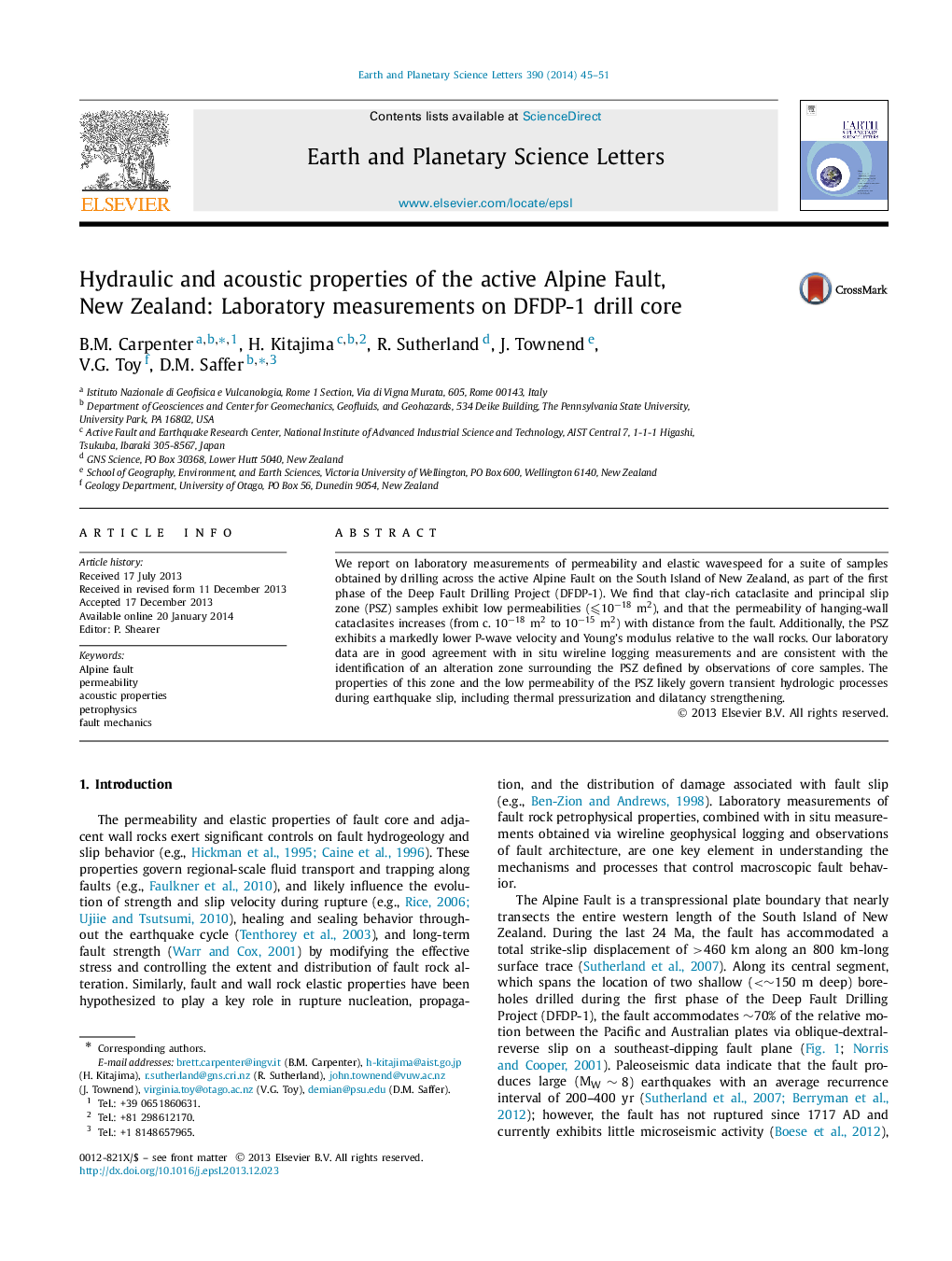| کد مقاله | کد نشریه | سال انتشار | مقاله انگلیسی | نسخه تمام متن |
|---|---|---|---|---|
| 6429571 | 1634766 | 2014 | 7 صفحه PDF | دانلود رایگان |

- Laboratory studies define hydraulic and acoustic properties of active Alpine Fault.
- Principal slip zone material shows distinct properties compared to wall rock.
- Laboratory measurements show excellent agreement with borehole measurements.
We report on laboratory measurements of permeability and elastic wavespeed for a suite of samples obtained by drilling across the active Alpine Fault on the South Island of New Zealand, as part of the first phase of the Deep Fault Drilling Project (DFDP-1). We find that clay-rich cataclasite and principal slip zone (PSZ) samples exhibit low permeabilities (⩽10â18 m2), and that the permeability of hanging-wall cataclasites increases (from c. 10â18 m2 to 10â15 m2) with distance from the fault. Additionally, the PSZ exhibits a markedly lower P-wave velocity and Young's modulus relative to the wall rocks. Our laboratory data are in good agreement with in situ wireline logging measurements and are consistent with the identification of an alteration zone surrounding the PSZ defined by observations of core samples. The properties of this zone and the low permeability of the PSZ likely govern transient hydrologic processes during earthquake slip, including thermal pressurization and dilatancy strengthening.
Journal: Earth and Planetary Science Letters - Volume 390, 15 March 2014, Pages 45-51